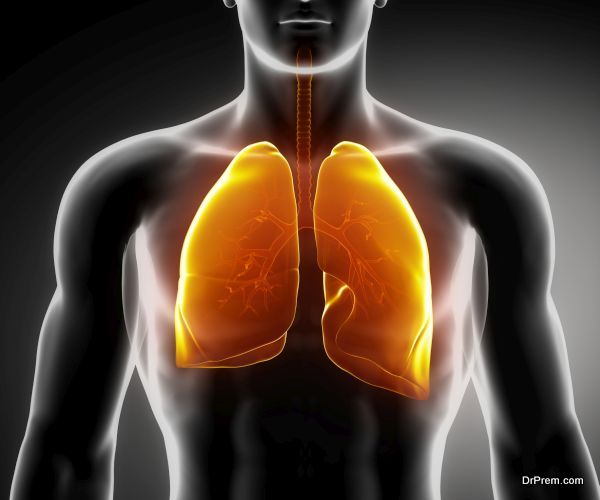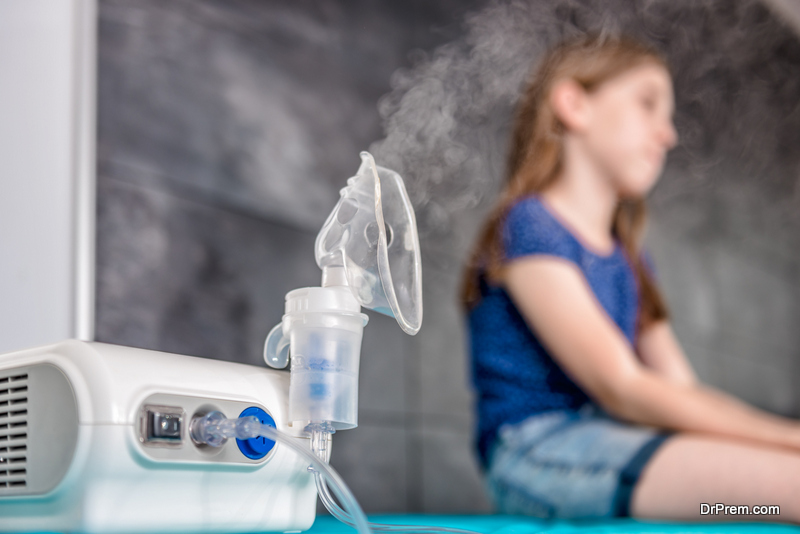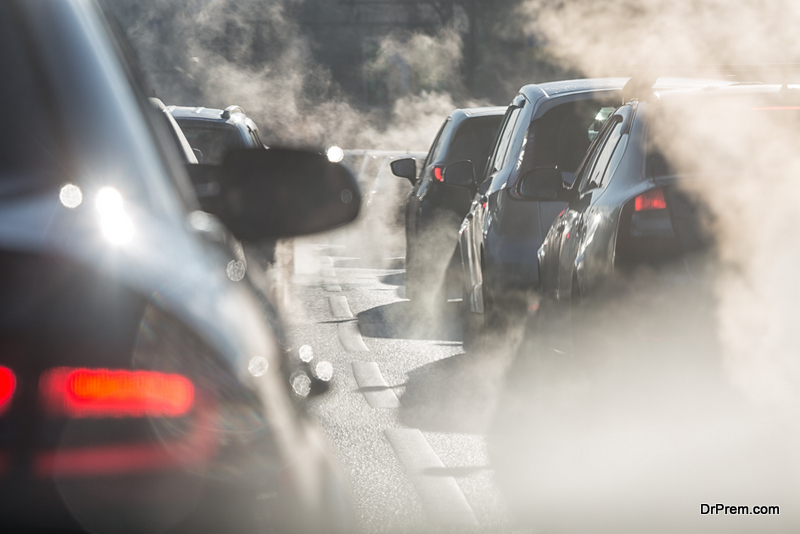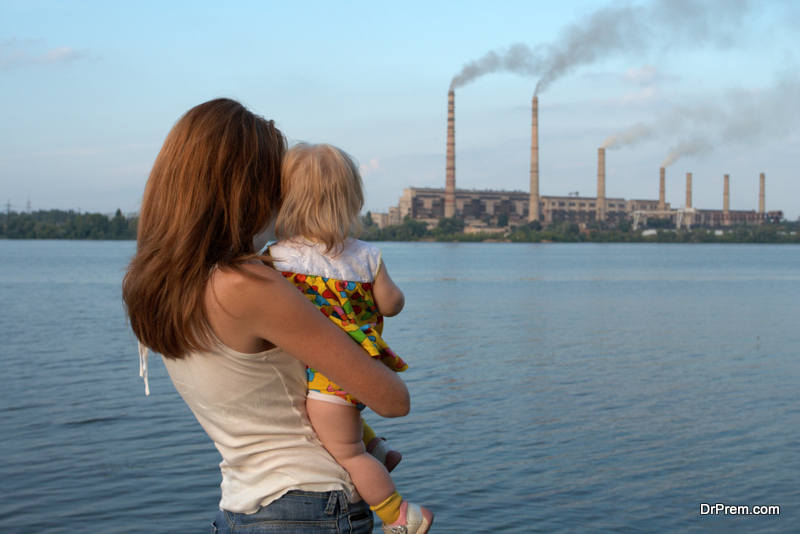Ever noticed that you have a sudden headache, runny nose and coughing just after you have come back from somewhere. This is not the beginning of a flu, though it has all the symptoms of flu. You could be experiencing sneezing, respiratory problems and more due to outdoor air pollution. Globally, air pollution kills almost 8.8 million people every year. A study conducted recently found that outdoor air pollution reduces life expectancy by 3 years. Read on to find out how and also whether it can be prevented.
Study says outdoor air pollution reduces life
 The microscopic pollutants in the atmosphere slip past the defenses of the body and penetrate into the respiratory as well as circulatory system, damaging the lungs, brain and heart.
The microscopic pollutants in the atmosphere slip past the defenses of the body and penetrate into the respiratory as well as circulatory system, damaging the lungs, brain and heart.
A study led by scientists from Germany says that air pollution may be a ‘pandemic’. They reached this conclusion after analyzing the deaths of people in many countries worldwide. It is killing more people than smoking ever did, or HIV, malaria and wars. The study revealed that there is a significant effect of air pollution on life span. Air pollution is reducing the life expectancy in all regions of the world.
It has been cut short by 4 years in countries like Japan and India, and by 2.2. years in European countries. Exposure to pollutants in the air was found to kill predominantly by affecting the blood vessels of the heart thus affecting blood supply to the brain.
The study also found that 2/3rds of the deaths were avoidable as they were caused by human made air pollution, such as pollution from fossil fuels.
The scientists were led by Max Planck Institute for Chemistry, Mainz, Professor Jos Lelieveld. The team examined the link between exposure to air pollution and the effect of air pollution on life span.
Computer models were used to calculate that the life expectancy has reduced globally by approx 2.9 years or 2 years 10 months. In comparison, tobacco shortens life by about 2.2 years and HIV/AIDS by approx 0.7 years. Diseases carried by insects, such as malaria and diseases from parasites shortens lives of people by 0.6 years and violence of all kinds, including wars kills by approx by 0.3 years.
Using the latest modeling techniques, the study authors estimated that globally, air pollution causes about 8.8 million premature deaths in the year 2015. Tobacco was responsible for 7.2 million deaths every year, followed by HIV/AIDS (1 million), malaria 600,000 and any kind of violence 530,000. Air pollution also had a deeper impact in older people over 60 years.
The paper published in Cardiovascular Research determined that air pollution is one of the main risks to health globally. They also said that the world is now suffering from a ‘pollution pandemic’.
Can the life expectancy increase with reduction in pollution?
 The study distinguished between natural sources like desert dust, wildfire emissions which are unavoidable and human-made pollution which can be avoided.
The study distinguished between natural sources like desert dust, wildfire emissions which are unavoidable and human-made pollution which can be avoided.
2/3rds of premature deaths can be attributed to human-made pollution, mainly due to the use of fossil fuels. This figure goes up to 80% in the high income countries. It is possible to avoid 5 and ½ million deaths worldwide per year if human caused air pollution; mainly from vehicle emissions are reduced.
In Africa, which faces deaths due to air pollutants like dust which is a natural pollution factors, only 0.7 years of expectancy can be shaved off the three years of life expectancy lost.
In East Asia, 3 years of the fours years total lost in life expectancy can be shaved off by controlling fossil fuel pollution, the main reason for pollution there. Similarly, Europe and North America can add some years to life expectancy if fossil fuels are phased out.
Who is at the most risk from air pollution?
 Some people are more susceptible to health problems due to polluted air than others. People who suffer from heart disease, congestive heart failure or coronary artery disease are most susceptible. Individuals with diseases such as emphysema, asthma, chronic obstructive pulmonary disease or COPD, outdoor workers, pregnant ladies and the elderly are also at risk, as are children who are under the age of 14.
Some people are more susceptible to health problems due to polluted air than others. People who suffer from heart disease, congestive heart failure or coronary artery disease are most susceptible. Individuals with diseases such as emphysema, asthma, chronic obstructive pulmonary disease or COPD, outdoor workers, pregnant ladies and the elderly are also at risk, as are children who are under the age of 14.
Essentially, those who have a weak immune system or developing immune system would suffer more from pollution. Those who are prone to exercise vigorously in open air are impacted by the outdoor pollution. If you fall into any of the groups above or love working out outdoors, then you have to take steps to protect yourself from outdoor air pollution.
Different types of outdoor pollution and how you can protect yourself:
1. Particulate matter
 This is perhaps the most dangerous type of outdoor air pollution. It is a toxic mix of microscopic solids as well as liquids floating in the atmosphere. The particles are in the form of smoke, haze and soot and so minute that they cannot be seen with naked eyes. When they are inhaled they can permeate into the bloodstream and even into the lungs. Particulate matter has been linked to cardiovascular problems, respiratory diseases and more.Most particulate pollution results from burning coal, diesel, oil gasoline and wood or crop residue.
This is perhaps the most dangerous type of outdoor air pollution. It is a toxic mix of microscopic solids as well as liquids floating in the atmosphere. The particles are in the form of smoke, haze and soot and so minute that they cannot be seen with naked eyes. When they are inhaled they can permeate into the bloodstream and even into the lungs. Particulate matter has been linked to cardiovascular problems, respiratory diseases and more.Most particulate pollution results from burning coal, diesel, oil gasoline and wood or crop residue.
To protect yourself from outdoor air pollution, such as particulate pollution, you should follow the air quality reports in the area, and follow the governmental recommendations to avoid exertion or outdoor activity. When the levels are high indoors, then avoid burning wood in your fireplace.
2. Diesel exhaust
 The smelly black exhaust spewed by diesel vehicles is a deadly mix of over 40 contaminants. This has been linked to premature death, asthma, cancer and presents risk for unborn babies too. People who live near truck depots, ports, construction sites, highways and busy roads are exposed to diesel exhaust.
The smelly black exhaust spewed by diesel vehicles is a deadly mix of over 40 contaminants. This has been linked to premature death, asthma, cancer and presents risk for unborn babies too. People who live near truck depots, ports, construction sites, highways and busy roads are exposed to diesel exhaust.
Because of latest governmental pollution standards, the new diesel vehicles on and off-road such as bulldozers, trucks and tractors pollute less than earlier. But older diesel engines still run on the road, and it will take quite a few years to see roads free of diesel vehicles.
To stay safe from diesel fumes, you should stay away from them on the road. Insist on school buses not idling on the road and urge the local authorities to retire old diesel vehicles. There can be regulations that can insist on owners retrofit their older diesel vehicles with pollution controls.
3. Benzene
 Benzene can cause childhood leukemia, cancer, blood disorder and other diseases. Even short-term exposure can lead to headaches, dizziness, drowsiness, eye, skin as well as respiratory tract problems. We are all exposed to benzene in tiny amounts, from gasoline, cigarette smoke or diesel exhaust. High levels of benzene are present in oil and gas facilities such as refineries, and communities nearby.
Benzene can cause childhood leukemia, cancer, blood disorder and other diseases. Even short-term exposure can lead to headaches, dizziness, drowsiness, eye, skin as well as respiratory tract problems. We are all exposed to benzene in tiny amounts, from gasoline, cigarette smoke or diesel exhaust. High levels of benzene are present in oil and gas facilities such as refineries, and communities nearby.
To avoid benzene, step away from gas pump when refueling the car. Pregnant women should be particularly careful of this. Lawn mowers powered by gasoline, and snow or leaf blowers of older models do not have pollution control gadgets fitted in them. These old machines can pollute the air around you even more than vehicles. Buy newer models which are more eco-friendly.
4. Ground level ozone
 Ozone, when it is high up in the atmosphere has a protective function. It forms a layer which blocks the harmful rays of the sun. But it is highly toxic when it forms near the ground. Ground level ozone is normally seen as smog, is formed when nitrogen oxides as well as other polluting gases (from power plants and vehicles) reacts with sunlight.
Ozone, when it is high up in the atmosphere has a protective function. It forms a layer which blocks the harmful rays of the sun. But it is highly toxic when it forms near the ground. Ground level ozone is normally seen as smog, is formed when nitrogen oxides as well as other polluting gases (from power plants and vehicles) reacts with sunlight.
Smog used to be an urban phenomenon, but due to the expansion of gas/oil industries and the lax regulations, it is visible in rural areas as well. Though regulations have become stricter, still the levels are not as low as they should be.
This toxic pollutant aggravates bronchitis, asthma and emphysema. Lung damage occurs even though the symptoms such as coughing or sore throat disappears. Chest pain, dry throat, nausea, headache and chest pain will bother. Susceptible people experience fatigue and athletes’ performance can be impacted.
To keep safe from ground-level ozone, keep checking the air quality reports in your locality. If the levels are unhealthy then you should stay indoors, refraining from all kinds of strenuous outdoor activity. On high level days, you could do some light exercises when ozone levels are relatively low. As vehicles’ emissions contribute to the formation of ground-level ozone, you can help by using public transport, walking or cycling.
Final Words
These are a few of the most common outdoor pollutants which we are exposed to on a daily basis. Vehicle and industrial emissions, construction etc are the human activities which fill the air with pollutants that cause damage to health. Making these activities greener with more governmental regulations as well as concerted effort by every individual and organizationto reduce emissions can increase the life expectancy in many parts of the world, wherever the primary cause of pollution is emissions from fossil fuels. Apart from outdoor pollution, we should also try to reduce indoor air pollution.
As the study revealed, if we want to prolong our lives, we should all take steps to fight against pollution.Supporting local, state and national efforts in any we can will help everyone to breathe easy and be safe from the ill-health caused by pollution.



